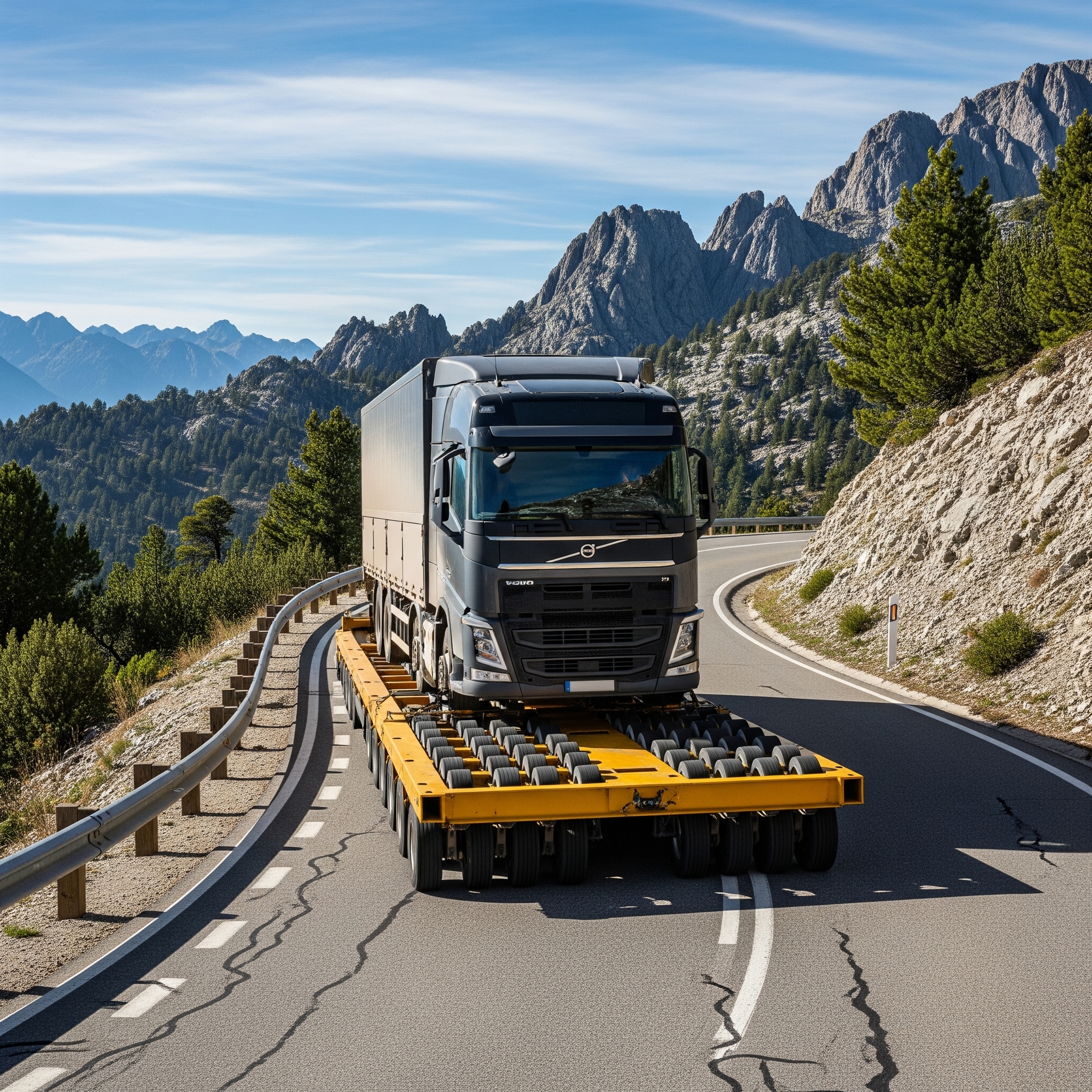Blog Details
- Home
- Blog Details

- Member
- August 3, 2025
Regenerative Braking by descending trucks on downhill roads
Exploring the concept of placing descending trucks on a multi-wheel, low-height platform for regenerative braking presents a fascinating, albeit ambitious, avenue for energy harvesting. While the immediate feasibility for widespread road use faces significant hurdles, the underlying principles open doors for specialized applications and future research.
Opportunities for Research and Development:
Specialized Material Science: The core challenge lies in creating platforms robust enough to handle 10-tonne trucks (or more) while remaining low-height and having minimal rolling resistance. Research into ultra-strong, lightweight composites for the platform structure and extremely durable, high-efficiency wheel bearings is crucial.
High-Capacity Regenerative Systems: The platform itself would need massive electric motors capable of acting as generators under immense load, paired with equally robust, high-capacity battery packs (e.g., advanced lithium-ion or solid-state batteries) or supercapacitors to absorb large amounts of energy quickly. Research into power electronics that can handle such high energy flows efficiently is paramount.
Advanced Control Systems: Managing the descent of a platform carrying a truck, especially on winding roads with varying gradients, requires sophisticated autonomous control systems. These would need to precisely modulate braking force, maintain stability, and potentially communicate with the truck's own systems. AI and machine learning could play a significant role in optimizing energy capture and descent safety.
Loading/Unloading Automation: The bottleneck of manually loading and unloading trucks makes this concept impractical for public roads. Research into automated, rapid, and safe vehicle transfer systems (akin to high-speed rail car changers or automated parking systems) at the top and bottom of descents would be necessary.
Integration with Grid/Charging Infrastructure: How would the stored energy be transferred? Research into high-power, fast-charging solutions at the base of the mountain, or even direct grid integration, would be essential to make the energy usable.
Potential Niche Applications and Business Models (Long-term Vision):
While mass adoption on public highways is currently unlikely, specific, controlled environments could present opportunities:
Mining and Quarry Operations: In large-scale open-pit mines or quarries, heavy trucks make repeated descents carrying massive loads. A dedicated, closed-loop system using such platforms on internal haul roads could recover significant energy, offsetting diesel consumption and reducing wear on truck brakes. This controlled environment minimizes many public road safety concerns.
Large Construction Projects: Similar to mining, large construction sites involving significant earth movement (e.g., dam construction, tunnel boring) could benefit from dedicated regenerative descent platforms for heavy-haul vehicles operating on fixed, steep inclines.
Closed Industrial Complexes: Factories or industrial zones with internal elevation changes could implement such systems for their fleet of heavy vehicles.
Proof-of-Concept & Pilot Programs: For now, the primary opportunity lies in research institutions and heavy industry players investing in small-scale pilots on private test tracks. This would involve proving the energy recovery potential, safety protocols, and automation capabilities without the complexities of public road traffic.
Specialized Logistics Services: In the very long term, if the technology matures, a specialized logistics service could emerge where companies manage these descent platforms, offering "energy-neutral downhill transport" to fleet operators for a fee.
Challenges to Overcome:
Safety: The paramount concern. Preventing trucks from rolling off, managing severe braking forces, and ensuring system integrity.
Infrastructure Investment: Enormous capital expenditure for the platforms, loading/unloading zones, and energy storage/transfer systems.
Operational Complexity: Managing a fleet of these platforms, their return trips uphill, and their integration into existing logistics.
Cost-Benefit Analysis: Proving that the value of the recovered energy outweighs the significant upfront and operational costs.
In essence, while the image of a truck effortlessly rolling down a mountain on an energy-harvesting platform is compelling, the path to its realization is steep and challenging. It represents a fascinating area for future research and niche industrial application rather than an immediate solution for mainstream road transport
